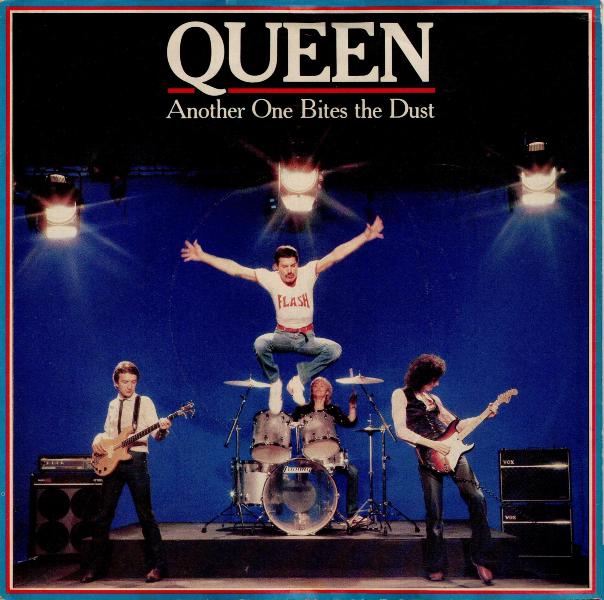The Inspiration Behind Queen’s Another One Bites the Dust and Its Connection to Chic’s Good Times
The Origins of the Bassline
John Deacon, Queen’s talented bass player, was in the studio with Nile Rodgers and Bernard Edwards of Chic when they were recording “Good Times”. He became enamored with Bernard’s distinctive bassline and decided to write something inspired by it for Queen. While Deacon’s line in “Another One Bites the Dust” is simpler and less syncopated than Edwards’ line in “Good Times”, it was something very different for Queen as it drew from funk rhythms. As a bass player myself, I can attest that both parts are incredibly fun to play.
Queen Bassist Finds Inspiration in the Studio
During the recording sessions for Chic’s hit “Good Times”, Queen’s John Deacon had the opportunity to observe legendary bassist Bernard Edwards craft his iconic bassline. Deacon was impressed by Edwards’ rhythmic precision and musicality. Though Deacon’s derivatives line in “Another One Bites the Dust” diverges significantly after the opening bars, taking the initial beat as a starting point showed Deacon’s appreciation for Edwards’ musicianship. Borrowing elements is common in music, and Deacon’s tribute helped Queen explore new funk-influenced sounds.

The Songs Begin to Diverge
While the opening bars share similarities, the songs quickly differentiate themselves harmonically and rhythmically. By the second measure, “Another One Bites the Dust” moves in its own musical direction. As I noted, once you get past the first three beats, the basslines are really very different. John Deacon deserves credit for taking inspiration and crafting something fresh rather than replicating Chic’s work. His line helped propel “Another One Bites the Dust” to massive commercial success.
“Dum - Dum - Dum” Is Where the Similarity Ends
Only the first half measure of the basslines in “Good Times” and “Another One Bites the Dust” align before the songs diverge entirely. After those iconic opening notes, the bass parts explore contrasting feels, rhythms, and tones. While initial influence was drawn, Deacon crafted a wholly new musical journey rather than mirroring the Chic track. Such limited common elements do not constitute cloning another’s work. Both songs proudly stand on their own merits.
Different Styles, Enduring Legacies
These singles could not be more different in mood and theme despite the fleeting bass similarity. “Good Times” ignites a feel-good dance party vibe, while “Another One Bites the Dust” taps into a darker glam rock groove. Nearly 40 years later, they remain staples of their respective eras. Minor inspirations do not detract from two genre-defining tracks that have rightly cemented their places in the musical canon.
Distinct Musical Personalities Coexist Harmoniously
While “Good Times” pulsates with sunny funk escapism and “Another One Bites the Dust” broods with rock swagger, both compositions showcase the tremendous talents of Chic and Queen. Their divergent styles proudly stand on their own. Minor gestures of homage, lasting just a few notes, do not diminish the immense artistic achievements and cultural impacts of these epochally influential pop singles. Works in different genres and eras can pay tribute to one another while carving out independent legacies.
The Acceptance of Musical Cross-Pollination
As a musician, I don’t consider brief inspirations between songs to be a problem. Minor interpolations happen all the time between artists within many genres. The music industry and audiences have generally embraced the natural cross-pollination that occurs. In fact, it often leads to new ground being broken, as was the case with Queen injecting funk into their rock sound on “Another One Bites the Dust”. And as I’ve pointed out, the connnection between these two songs is minimal beyond the first few notes. There is no doubt they both more than earn their rightful spots in pop music history.
Few Notes of Common Ground Spawn Musical Milestones
Only a scintilla of commonality exists between the basslines of “Good Times” and “Another One Bites the Dust”. Yet from these fleeting similarities sprang two titanic songs that shaped the eras in which they were released. Minor gestures of influence pose no threat when the completed works sound entirely independent. The music world is richer for these compositions coexisting with pride of place in the canon. Minor inspirations often birth major innovations and joy.
Other Cases of Musical Similarity
When comparing other songs, such as Alice Cooper’s “Only Women Bleed” to Pink Floyd’s “Brain Damage”, the resemblance is far closer than what we find between “Good Times” and “Another One Bites the Dust”. To my ears, “Only Women Bleed” bears a strong melodic and harmonic likeness to portions of “Brain Damage”, whereas the Queen song quickly carves its own identity. Evaluating allegations of copying requires looking at the scale and scope of any common elements within the full works. Minor sparks of inspiration versus wholesale replication make all the difference.
Comparative Analyses Illuminate Degrees of Influence
By examining degrees of likeness across songs noted to share characteristics, we gain perspective on the nature and scale of such relations. Whereas “Only Women Bleed” mimics long melodic phrases from “Brain Damage”, the Queen bassline borrows just a few opening notes before differentiating entirely. Comparing examples like these clarifies distinctions between substantial replication versus limited, transformative influence - and affirms the independence of works like “Another One Bites the Dust” that drew fleeting sparks of inspiration.
In Summary
In drawing this discussion to a conclusion, it is evident that “Another One Bites the Dust” and “Good Times”, though sharing a scintilla of similarity at the inception, took completely divergent musical paths that justified their own artistic identities. Minor inspirations or cross-pollinations between works of different eras, genres and styles add richness to the heritage of popular music when the end results stand independently. Both songs have rightfully cemented their places among the most iconic pop compositions in history. The music world is all the better for these landmarks coexisting harmoniously.
Iconic Works Can Co-Exist Through Inspiration
In summarizing, it is clear that the infinitesimal similarities between “Another One Bites the Dust” and “Good Times” existed at the start only. These revered songs immediately took off on independent enough journeys to define themselves as genre-shaping works. When inspiration spawns wholly new paths, landmark compositions can pay homage while retaining autonomous legacies. The musical canon is enriched for housing landmarks like these that coexist peacefully despite fleeting sparks of jointly lit flames.
